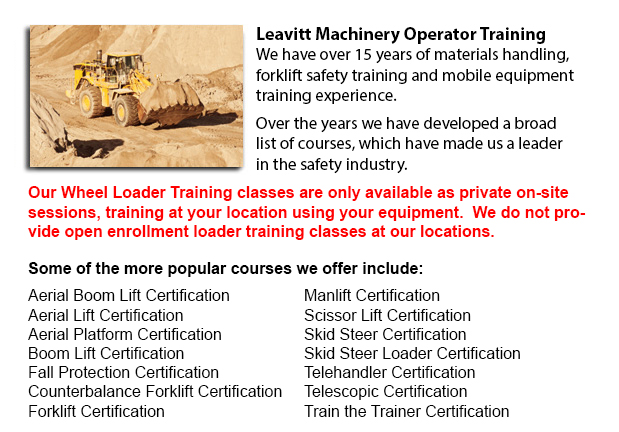
Forklifts are obtainable in different load capacities and several models. The majority of forklifts in a typical warehouse setting have load capacities between one to five tons. Larger scale units are used for heavier loads, such as loading shipping containers, can have up to fifty tons lift capacity.
The operator could make use of a control in order to raise and lower the blades, that are likewise referred to as "tines or forks." The operator could also tilt the mast so as to compensate for a heavy load's tendency to angle the blades downward to the ground. Tilt provides an ability to function on uneven ground also. There are annual competitions meant for experienced lift truck operators to contend in timed challenges and obstacle courses at local forklift rodeo events.
General use
All forklifts are rated for safety. There is a particular load maximum and a specified forward center of gravity. This very important info is provided by the manufacturer and positioned on the nameplate. It is important cargo do not go over these specifications. It is prohibited in a lot of jurisdictions to interfere with or take out the nameplate without getting permission from the forklift maker.
Nearly all forklifts have rear-wheel steering to be able to enhance maneuverability. This is specifically helpful within confined areas and tight cornering areas. This particular type of steering differs quite a bit from a driver's initial experience together with different motor vehicles. For the reason that there is no caster action while steering, it is no required to apply steering force so as to maintain a constant rate of turn.
One more unique characteristic common with forklift use is instability. A constant change in center of gravity occurs between the load and the forklift and they must be considered a unit during operation. A forklift with a raised load has gravitational and centrifugal forces that could converge to bring about a disastrous tipping accident. So as to prevent this possibility, a lift truck must never negotiate a turn at speed with its load elevated.
Lift trucks are carefully built with a certain load limit meant for the blades with the limit decreasing with undercutting of the load. This means that the load does not butt against the fork "L" and will decrease with the rise of the tine. Normally, a loading plate to consult for loading reference is located on the forklift. It is unsafe to make use of a forklift as a worker hoist without first fitting it with specific safety tools like for example a "cage" or "cherry picker."
Lift truck use in warehouse and distribution centers
Important for whatever warehouse or distribution center, the lift truck must have a safe setting in which to accommodate their efficient and safe movement. With Drive-In/Drive-Thru Racking, a forklift has to travel within a storage bay that is multiple pallet positions deep to set down or take a pallet. Operators are normally guided into the bay through rails on the floor and the pallet is located on cantilevered arms or rails. These confined manoeuvres need skilled operators to be able to carry out the job safely and efficiently. Since each pallet requires the truck to go into the storage structure, damage done here is more common than with other kinds of storage. If designing a drive-in system, considering the measurements of the fork truck, together with overall width and mast width, have to be well thought out to be able to make sure all aspects of an effective and safe storage facility.
-
London Crane License
London Crane License - Crane operators ought to be "credentialed", that means they must possess a crane operator license or certification. Credentialing is considered a mandatory governmental requirement in order to practice as a crane operator. Obta... More -
London Heavy Equipment Operator Training
London Heavy Equipment Operator Training - Training facilities which offer quality standards in the industry and not just provide field performing tasks but added equipment training are highly sought after. Accredited schools provide students the kno... More -
Telehandler Training in London
Telescopic handlers usually referred to as telehandlers for short, are a very popular piece of heavy construction machinery. They are usually utilized in the agriculture and construction industries. These machines have maximum reaching capacity and c... More -
London Boom Lift Certification
London Boom Lift Certification - Elevated work platforms allow maintenance operations and work to be carried out at heights which could not be reached by any other means. Workers utilizing boom lifts and scissor lifts can learn how to safely operate... More -
London Fall Protection Ticket
London Fall Protection Ticket - Fall-related accidents are the number one reason of death within the construction industry. The potential for fall incidents really increases based upon the kind of work that is being completed within your workplace. T... More -
London Forklift Safety Training
London Forklift Safety Training - Anybody who wants to operate a lift truck should take a forklift safety training program to become a certified forklift truck operator. There are several ways to obtain forklift training. Programs are provided throug... More -
Operator Safety Training, Re-Qualification Training, In-House Instructor Training in London
Lift trucks are used in nearly all warehouse operations and in boat yards and in industrial construction sites. The reach feature of a forklift is a vital component used in various applications like for instance whenever a shelving system is being us... More -
London Boom Lift Safety Training
London Boom Lift Safey Training - Boom lifts are a type of elevated work platform or aerial lifting device that are commonly utilized in construction, industry, and warehousing. Boom lifts can be used in practically any surroundings due to their vers... More

Forklift Certification London
TOLL FREE: 1-888-254-6157
London, Ontario
forkliftcertificationlondon.com
Email Us
About Us


